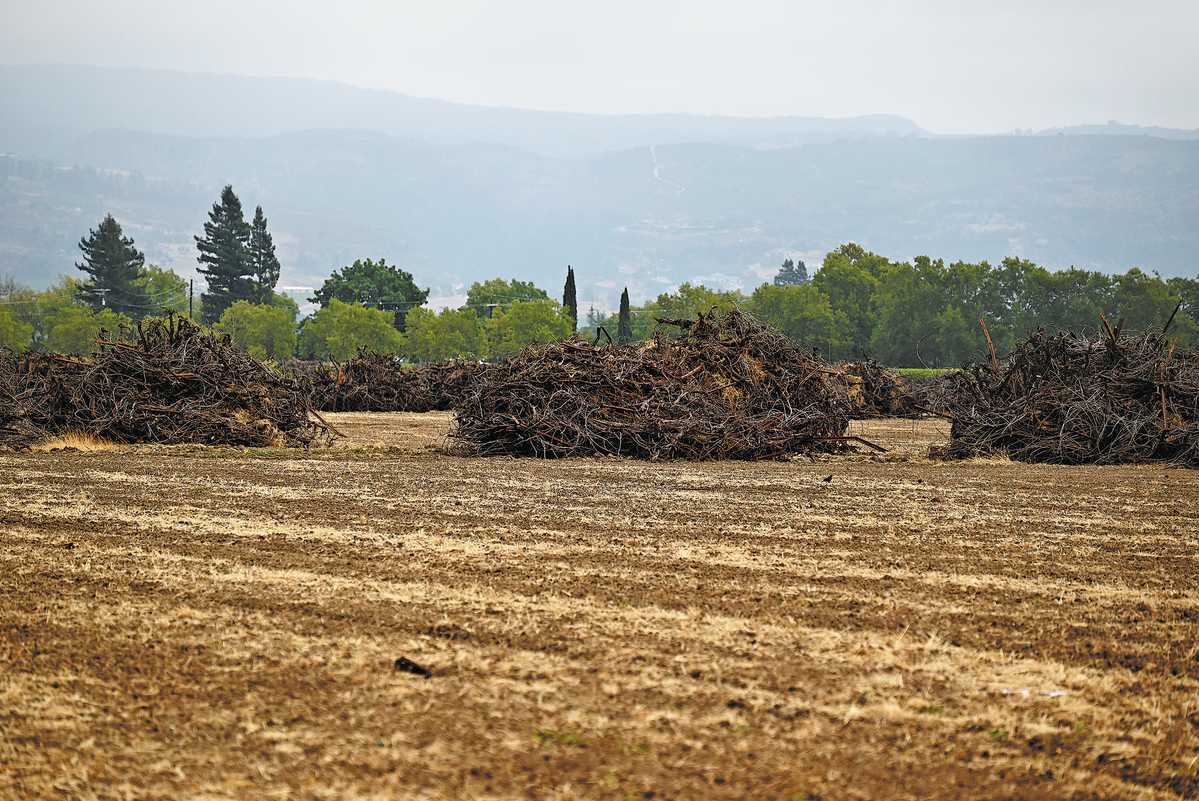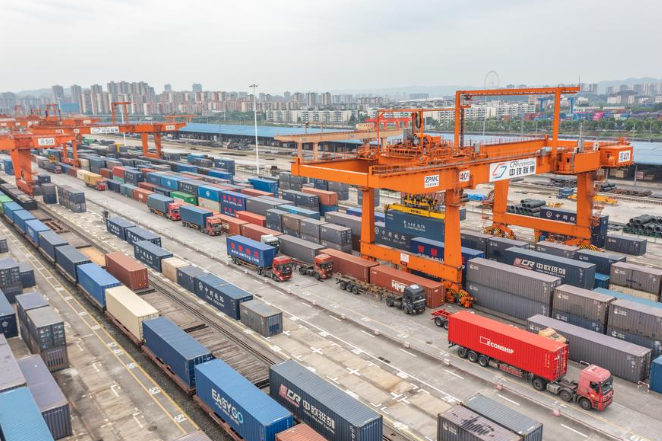A bitter harvest for California vintners
Wine makers struggle as tariffs worsen industry headwinds


From the sprawling vineyards of the Central Valley to the prestigious hillsides of Napa Valley, California's wine growers are facing a troubling harvest season.
Rows of unpicked grapes shrivel under the autumn sun, their leaves yellowed and curled. Once-neatly trimmed vines droop under the weight of fruit clusters. In some areas, bulldozers plow through what were productive vineyards just months ago, ripping decades-old rootstock from the soil.
The abandoned vineyards reveal growing pressures on an industry that has helped shape California's agricultural economy and international reputation.
"It is sad. A lot of people's identity is tied up in their family farm, and there's a real challenge right now that is making it difficult," Stuart Spencer, executive director of the Lodi Winegrape Commission, told China Daily.
"Most of them are family farms. They're getting out of the business," Spencer said. "They're either putting the property up for sale or looking to lease the ground to somebody else." His organization represents winegrowers and winemakers in Lodi, a major wine-producing region in California's Central Valley.
Growers are in the midst of a harvest that started in early September and runs through late October. Despite favorable crop conditions and a good growing season, this year's harvest will be the smallest in decades because many grapes have gone unsold and won't be picked.
Spencer described the situation as "a crisis" that has gripped the Central Valley for two years, with this year the worst yet. "It's widespread across California," he said.
Over the past two years, an estimated 600,000 to 800,000 tons of California wine grapes — enough to fill 500 million to 650 million bottles — were left rotting on the vine because growers couldn't find buyers, according to Spencer.
The crisis has hit independent growers particularly hard. Nearly 80 percent of California wine grapes are grown by independent farmers, and in the Central Valley, more than 90 percent of growers operate independently, Spencer said.
Many independent growers have abandoned their vineyards rather than face a difficult choice: walk away and lose their investment or farm all year only to lose money at harvest, said Jeff Bitter, president of Allied Grape Growers.
"It's a losing situation all the way around," Bitter told China Daily.
"It has happened before, but this is the worst I've ever seen it, and I've been doing this for almost 30 years," said Bitter, a fourth-generation grape grower in Madera County.
Both Bitter and Spencer point to multiple factors driving the crisis, including oversupply of wine, weakening consumer demand, and rising costs from inflation and labor shortages. But tariffs and trade policies have compounded these challenges, putting California producers at a disadvantage against heavily subsidized competitors in Europe.
Trade disadvantages
"The trade issues have affected demand for California wine globally," Spencer said. "Part of it is an anti-American attitude. That's what's going on in Canada. On the supply chain side of things, there are a lot of pressures."
Earlier this year, the Trump administration imposed tariffs on Canadian steel and aluminum shipped to the United States. In response, the Canadian government announced a 25 percent tariff in March on US wine, beer and other alcoholic beverages, prompting most Canadian distributors to pull American wines from shelves and cancel orders.
After nearly six months of negotiations, Canada lifted the retaliatory tariff effective Sept 1, but most Canadian provinces have not returned American wines to store shelves, keeping California producers shut out of their largest export market.
"Exports are horrible because of the tariffs," said Scott Meadows, CEO of Maxville Winery in Napa Valley, who has more than 20 years of experience in winemaking and management. "No one's exporting the volumes that we used to."
"Canada was the top export market for all Napa wines, and that's been shut off completely thanks to the tariffs," Meadows said. "So we're not sending it all to Canada, and it's really hurting us."
For California wineries, the damage from retaliatory tariffs represents only part of the fallout. The tariffs have driven up costs for key imports needed for wine production, including glass bottles largely sourced from China and Mexico, corks and barrels from Europe, and labels and packaging materials from around the world.
"Tariffs are a real problem," Meadows told China Daily. "If we buy some equipment, for example, a forklift, one of the most important pieces of equipment that a winery has, the parts are mostly made in foreign countries."
"When a forklift breaks down and you need a part, it used to cost maybe $300 to fix it. Now it might cost $600 or $800 because the tariffs have bumped up all those prices. So we've definitely felt that," he said.
Tariffs have also driven up expenses for everything from tractors to production equipment throughout their estate. "So long term, that's going to hurt us. Because as we start to go through the harvest and figure out what our costs are at the end of the year, that's certainly going to impact our wine," said Meadows.
There is always interest in the Chinese market, but trade-related issues have made it more challenging to develop that market, said Spencer.
He pointed to tariffs imposed on US wines entering China as countermeasures against US tariffs on Chinese goods in 2018 during Trump's first term. The trade disputes led to a combined tax rate exceeding 90 percent for US wines.
"I think everyone on the business side wants consistency, like developing an export market in China," he said. "We have vendors in Asia now looking at doing business there. But I think the opportunities have been less in recent years because of the up-and-down trade relations."
Bitter urged the Trump administration to carefully administer tariff and trade policies to avoid exposing the US wine industry to global discrimination.
The constant policy shifts have created an environment of uncertainty that makes long-term planning difficult, Bitter said.
liazhu@chinadailyusa.com

































